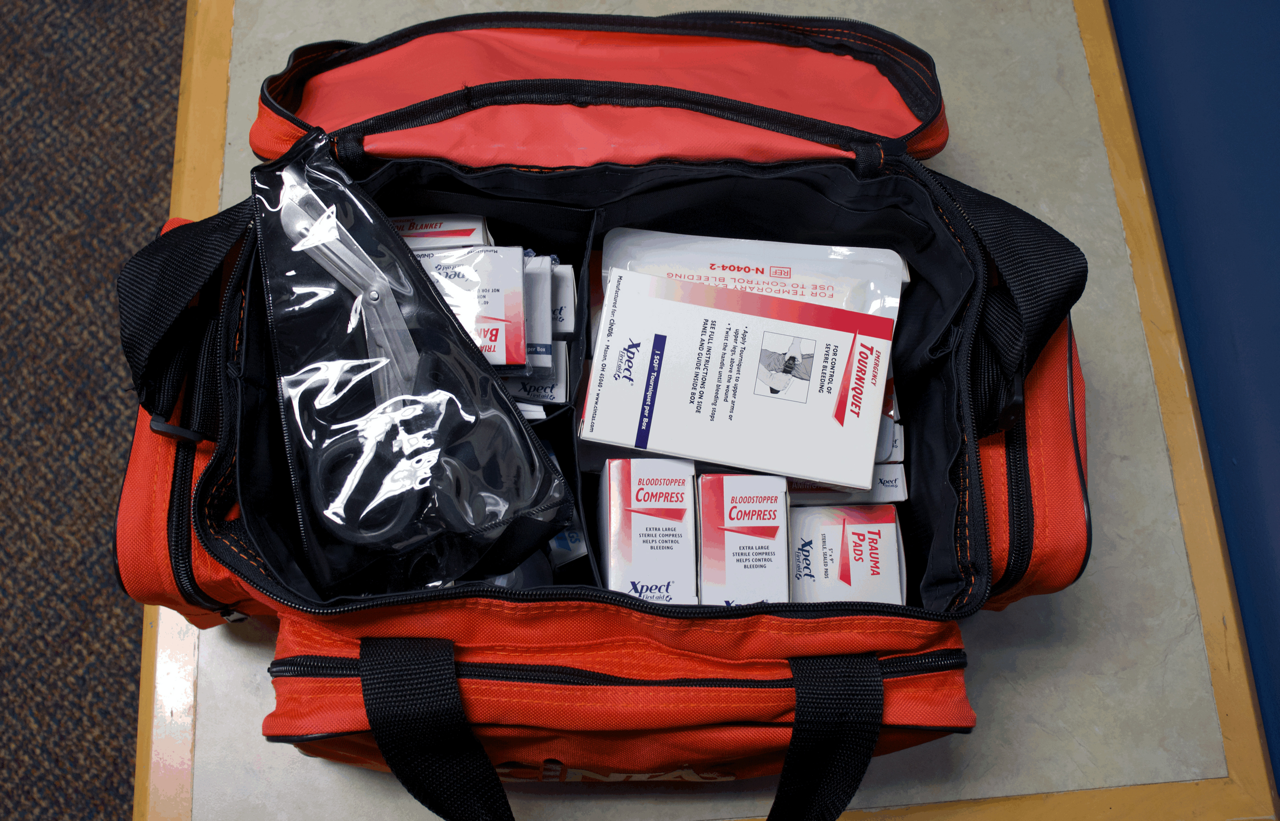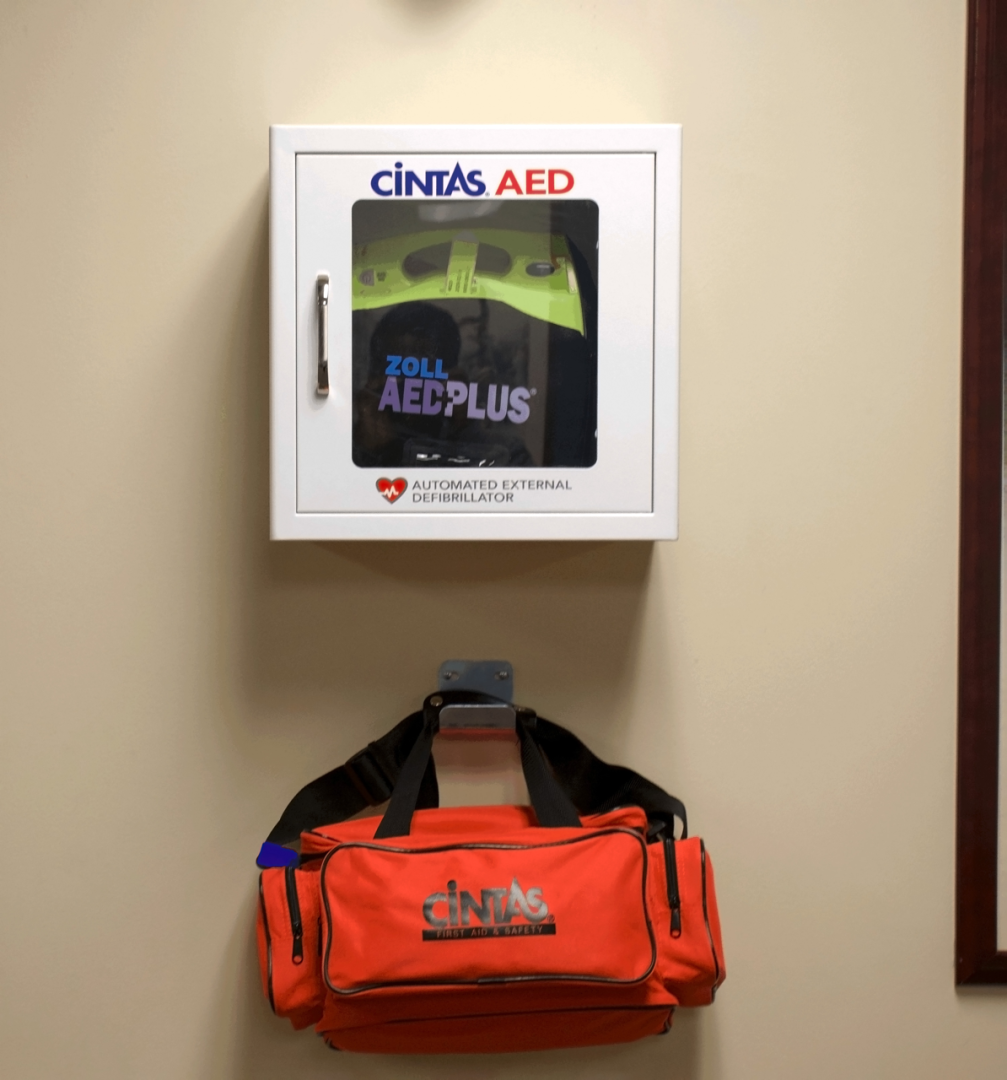The University of Indianapolis Police Department has implemented several new features in order to upgrade campus’ security and safety, according to an email sent out by UIndy Police on Jan. 24. These updates include additional Automatic External Defibrillators (AEDs), Nightlock Door Barricades and NaloxBoxes, according to the email.
University of Indianapolis PoliceChief and Director of Campus Security Brandon Pate said these upgrades were necessary to provide public safety and better prepare the campus for anything. AEDs have been added throughout campus in more popular buildings, according to Pate. He said AEDs have pads that are put to someone’s chest in an emergency to provide a shock if they have an irregular heartbeat.
“We’ve had AEDs on campus and for athletics, they’ve been in the student center, officers have them,” Pate said. “We put additional AEDs in spaces where students visit most commonly, so we added some AEDs to Schwitzer, added some to the library, and we make sure there’s one in every police squad car. There were some added in the Health Pavilion and then athletics had a couple that were upgraded.”
The AEDs were a necessary upgrade, according to Pate, in order for officers to have more lifesaving equipment so they do not have to wait for medics to arrive in case of a cardiac emergency. By equipping officers with more equipment like this, they will be able to respond better to issues, Pate said.
“It’s just further strengthening our response and our stance on response to medical issues,” Pate said. “When you open it, it tells you what to do, which is great, you don’t have to have any kind of specialized training. It will tell you step one, do this, step two, do this and then that AED will do an assessment itself of the citizen needing help. And it won’t provide a shock unless it determines one is needed. So, you could press shock and it’s not going to do anything. The AED itself must pick up the need for the shock for it to happen. And they have both pictures and audible instructions on how to use the AEDs.”

The night lock door barricades were a security upgrade inspired by student Audrey Walters, who is an advocate for better protection during lockdowns. This was a passion project based upon safety which she brought towards the university leadership board, and the university has started by placing them in the Lilly Fitness Center and Esch Hall, according to Pate.
“What’s great about that system is it’s another one that needs very minimal training,” Pate said. “It’s one piece, just a little ‘L’ bracket, that slides into a piece that’s mounted on the door and it uses the stability of the floor to secure the door closed. The video that’s out there on their website shows about a 40-minute breach time using Rams barricade, brakes [and] collagen tools. Kicking it takes a long time to break through that door because it’s been engineered to basically use the strength of the floor to hold the door closed and it takes seconds to put it in place, so once you get the immediate notification to lock down, professors or students or staff or anybody, really, could close the door, grab the barricade, slide it into place and then hide.”
Another security upgrade brought to campus is NaloxBoxes which are used to stop drug overdoses. Associate Professor of the Phylis Lan Lin School of Social Work and Mental Health Counseling Stephanie Rudd collaborated with Overdose Lifeline to study addiction in Indianapolis and looked at ways to combat overdoses in southern Indianapolis, according to the email sent by UIPD.
“There are overdoses in the South Side, there’s Narcan news already in the city, there are just not enough NaloxBoxes,” Rudd said. “We decided to start working and partnered with Overdose Lifeline, through them the governor’s office and the Division of Mental Health and Addiction provides the boxes and all of the supplies. We just really want the community to benefit, meaning we want these boxes to be accessible to those on the south side as well as our student body, as well as faculty and staff, whatever it might be. So Chief Pate and I strategically thought through the areas in the city and the campus and kind of figured out there is a long line of foot traffic from the red line to the homeless encampment. We said we definitely want one over there. We want to hit any good foot traffic so that everyone has access to the lifesaving measures of Narcan and then the fentanyl testing strips.”

There are five boxes on campus that will be refilled if needed through constant check-ins. NaloxBoxes are located in the UIndy Police Station, Health Pavilion, the 24-hour study lab, Schwitzer Student Center and Ruth Lilly Fitness Center, according to Rudd.
“We never ever want them to be empty, so I’ve worked with different contacts across campus to have either a daily or every other daily check-in reporting to me and then they have backups. …” Rudd said. “They’re hitting their backups, then I order more, and it goes to them, and we just keep this process going essentially forever.”
The NaloxBoxes have already been installed at the locations listed, the AEDs have also been installed. The door suppressants are currently being installed in Esch, according to Pate. He said students can always become more involved with campus safety by reaching out to the police department. He said he and the other officers are always looking for opportunities to improve campus safety.
“Some stuff that we’re looking at is how we communicate, where we can improve, getting that messaging out to students and staff and faculty,” Pate said. “… If anything that kind of comes across the desk that we see that can be approved on, we’re going to look at education opportunities for students. We’re going to continue to provide those and try to provide more. We’re really trying to get our grasp on a way to get student feedback so that it can be community-informed.”






